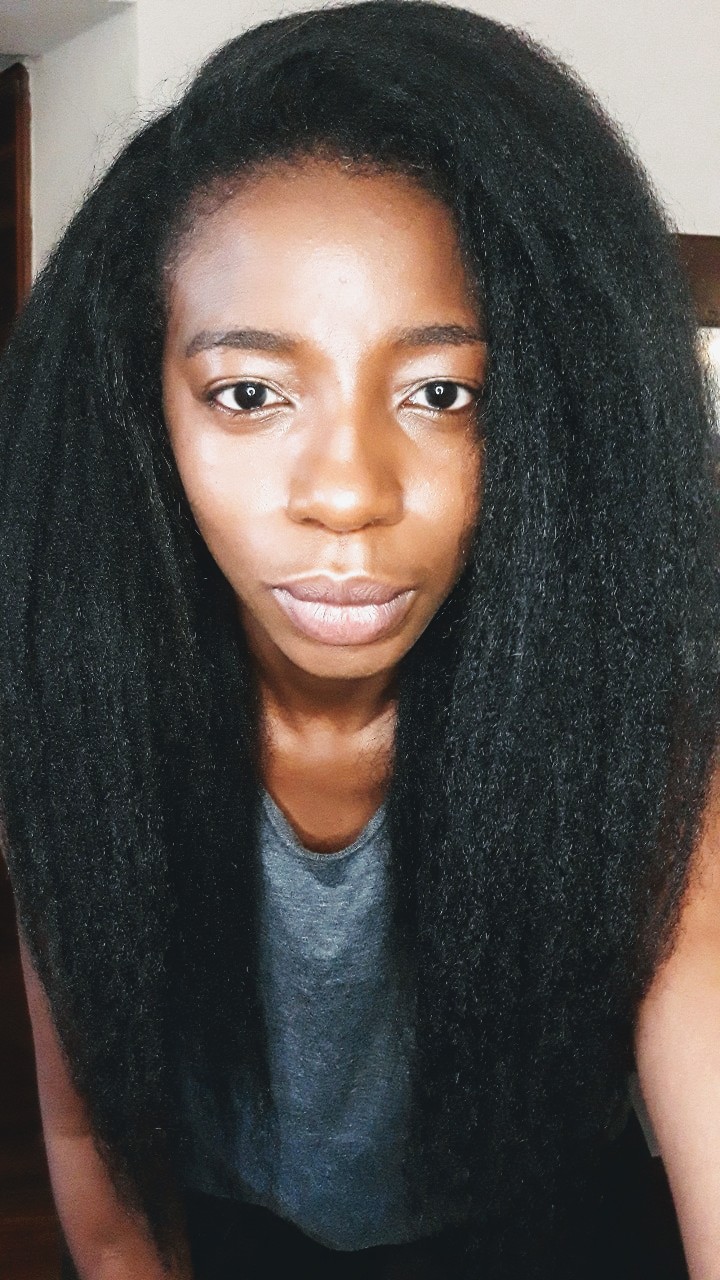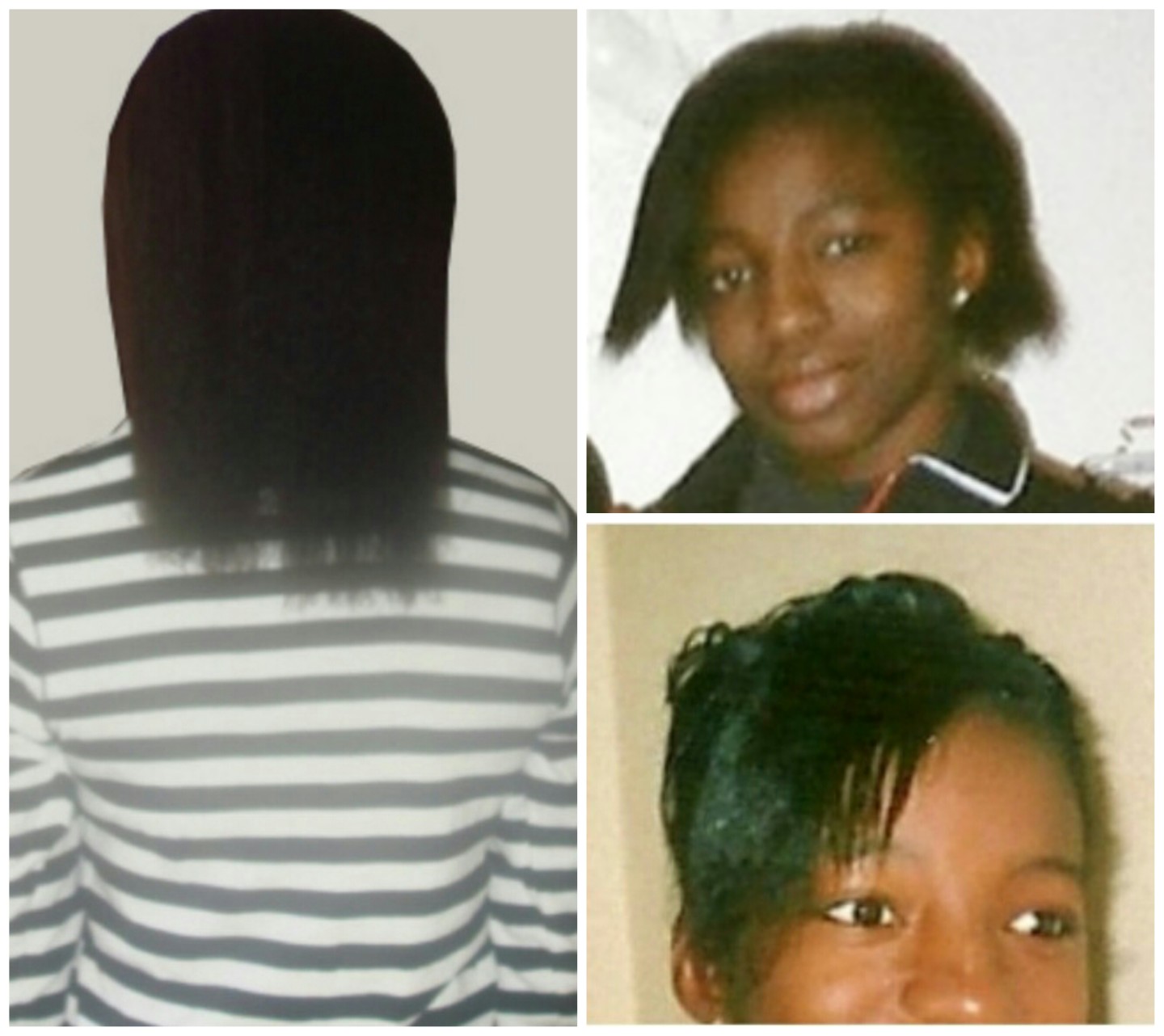
Over the years, my hair has sustained a lower degree of damage
I believe everyone has damaged hair. There I said it and I am glad I got it off my chest.
That pretty head of relaxed hair is damaged and yes that gorgeous head of well cared for natural hair is damaged too.
I decided to write this post because of a popular discussion aka argument I see all over social media about whether or not it is possible for relaxed hair to be healthy.
I’ve never seen or read any comments which echoes my own view on this topic so it appears to be my own unique perspective. A popular view is that relaxed hair cannot be healthy because it has sustained damage during the relaxer process.
My argument is that if damage is being used as a yardstick by which we measure healthy hair then nobody has healthy hair – because every single persons hair has sustained a degree of damage.
The only time our hair is “healthy”, if healthy means zero damage, is when it initially grows out of the scalp. Thereafter, it begins to sustain damage. It is exposed to UV Rays, we wear tight ponytails, buns and puffs, we gel it down, blow dry it, twist it and untwist it, comb it, it gets matted so we detangle it, sometimes we flat iron it, put all sorts of products and extensions in it, I could go on and on but I am sure you get the picture.
Our hair is a fibre and all the examples given above will cause the fibre to sustain some degree of damage. Even the simplest hair care regimen in which the hair is cared for amazingly well will result in a degree of damage from physical wear and tear being sustained over several years of care.
So if everyones hair has sustained damage, can we say anyone’s hair is healthy??? Everyone has damaged hair but the more severe the damage, the more “unhealthy” the hair will look, feel and be. The relevance of degrees or levels of damage is not somthing I’ve seen being discussed on any healthy hair platforms.
Focusing on relaxers in particular, yes relaxers breaks down the disulphide bond in the hair fibre. The disulphide bond is what gives hair majority of its structural strength and the relaxer chemical and process breaks down about 40 to 50% of this bond BUT what most people do not realise is that the broken bonds will reform when lanthionine is produced in the hair during the relaxer process. The bonds do not remain broken. A new type of cross link bond is formed. So although the hair fibre is damaged, compromised and not as strong, it is still classed as a “stable structure because of the new cross links that are formed” (quoting my trichology textbook).
Please note that I am not trying to sugar coat anything, the fact remains that yes relaxers causes a lot of damage to the hair but it does not destroy the overall integrity of the hair fibre especially when relaxer abuse and incorrect procedure is avoided.
Please note that ladies with very fine delicate natural hair will probably want to stay away from relaxing as it is likely to result in a degree of damage that is too high for their high fibers to still have adequate levels of elasticity and structural integrity. Not everyone has hair that can withstand a relaxer process and texlaxing too is not compatible with some hair types.
Remeber also that relaxed hair should never be fully straight, why? So that the fibre retains some degree of strength and flexibility which is essential for the fibre fight breakage.
This is a key opportunity to tell any lady who sees relaxing as the “easy way out” that that notion couldnt be further away from the truth. The more damage hair has sustained, the more important it is to have a good hair care plan in place to support the weakened fibre or structure of the hair. If your hair has been relaxed you simly cannot afford to slack on your hair care if you want your hair to stay on your head.

I had a high degree of damage in these pictures
My key message is that, it is the severity or degree the of damage that hair has sustained that should used to determine whether or not it can be classed as healthy. The less damage your hair has sustained, the healthier it is.
Based on the percentage or severity of damage sustained, it is possible for a woman with relaxed hair or texlaxed hair to have healthier hair than a woman with natural hair who may flat iron her hair often or who may have colored her hair.
If you take two women with identical hair types, who both take care of their hair, if one is relaxed and the other is natural, the lady with the natural hair will clearly have healthier hair because it has sustained less damage but it does not mean that the lady with relaxed hair isn’t healthy too, depending on the degree of damage her hair has sustained and ongoing hair care.
My other aim with this post is to emphasize the function or the point of hair care which is to reduce the occurrence of damage, to minimize the severity of damage, mitigate the symptoms of the damage already sustained and the continued preservation of the hair fibre.
Hair care helps us preserve the integrity of our hair so that it looks healthy, feels healthy and is strong enough to resist breakage so that it is able to get longer. Hair care is also essential to keep our scalp healthy which in many ways is even more important.
We all have damaged hair but preventing damage from occuring too often and reducing the extent of damage sustained through healthy hair care is essential to preserve the fibres (aka keep the fibres in a stable enough state to be classed as healthy.
I hope you find this concept of degrees of hair damage educative and I hope it will help readers appreciate why hair care is essential.
When I look at my hair currently, I see it as 25% to 30% damaged, not that I have any scientific test for this, I am simply basing it on the fact that besides texlaxing all I do to my hair is care for it and put it in a protective style. I havent flat ironed my hair in over a decade. In the pictures above of my hair prior to my hair journey, I would rate my hair as 55% to 70% damaged. I was not following correct procedures for relaxing and used to flat iron my hair very often out of boredom and knew very little about hair care. Through healthy hair care I have reduced the severity and frequency of damage my hair has sustained and that is why is now healthier and longer and thicker than it used to be.
If you were to rate the percentage of damage your hair currently has, what would your figure be? #nojudgement
Stay safe.
Take care of yourself and take care of your hair.
x
Lade

Well… right now, probably about 60% damaged. I was natural from 2013-2019. I decided to texlax last summer…I touched it up in February. I’m doing better now with taking care of my hair than I did when natural, but I’m still figuring things out.
Hello Lade. Since the time I stumbled on your website, I have come to realize that I have been abusing my hair too much. And I’ve repented of my sins and started taking proper care of my hair…. Or not. Cos I notice now that my hair is growing in length but it sheds more and has less volume as before but the volume problem had begun before I started following your post and now, it seem not to get any better.
But in all, your posts and directives has opened my understanding to black hair and all there is to know. So thank you.
Thank You So Much Lade… Because of your write-ups online I have seen so much improvement on my hair, that of my Mum and my Sis. We’ve been following every details of it and thank God for taking out time to teach and educate us on how to take good care of our hair. God Bless You. Amen.